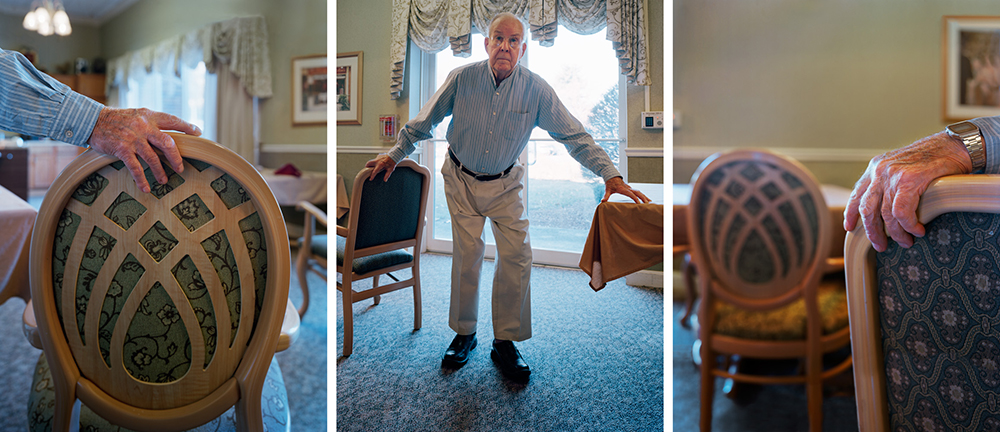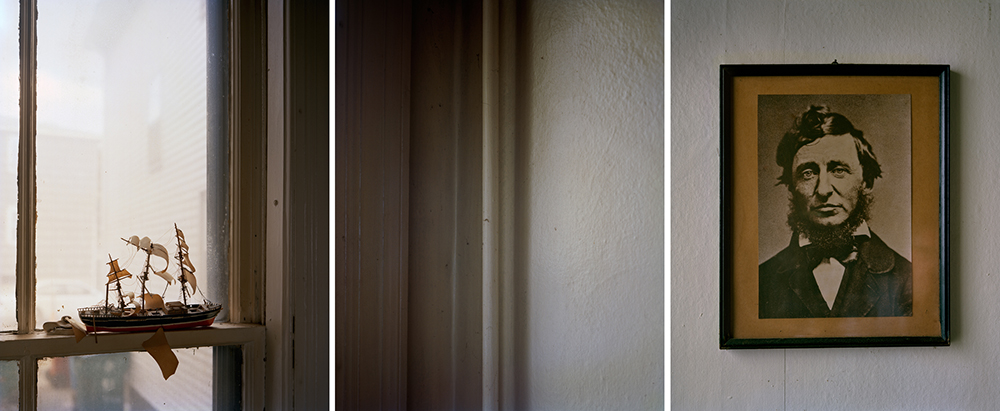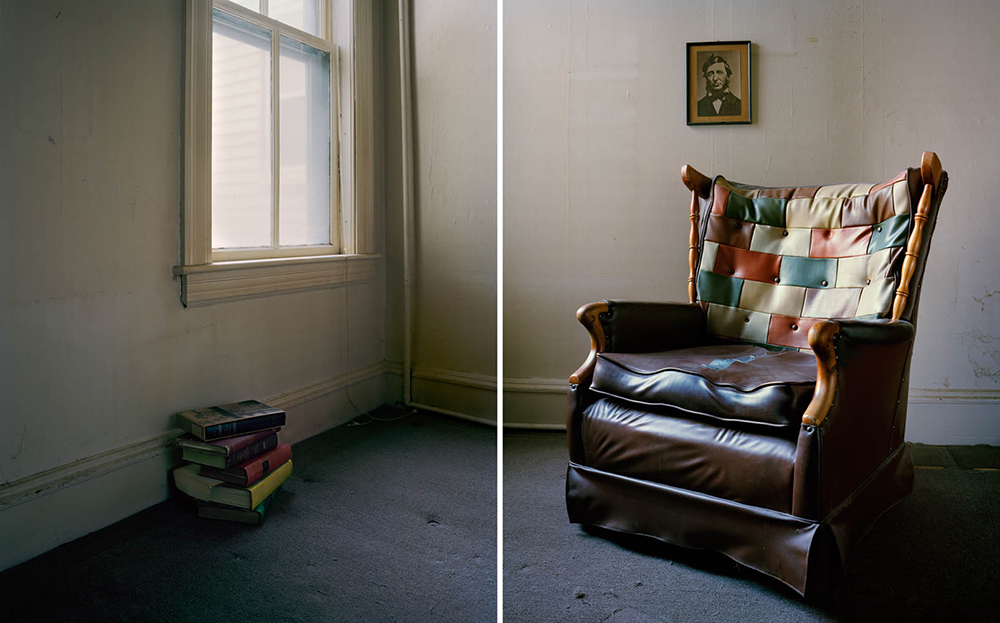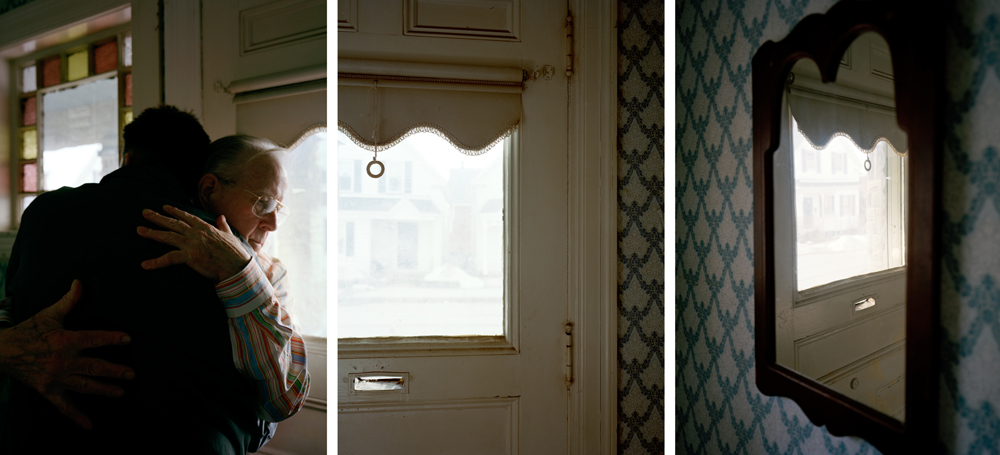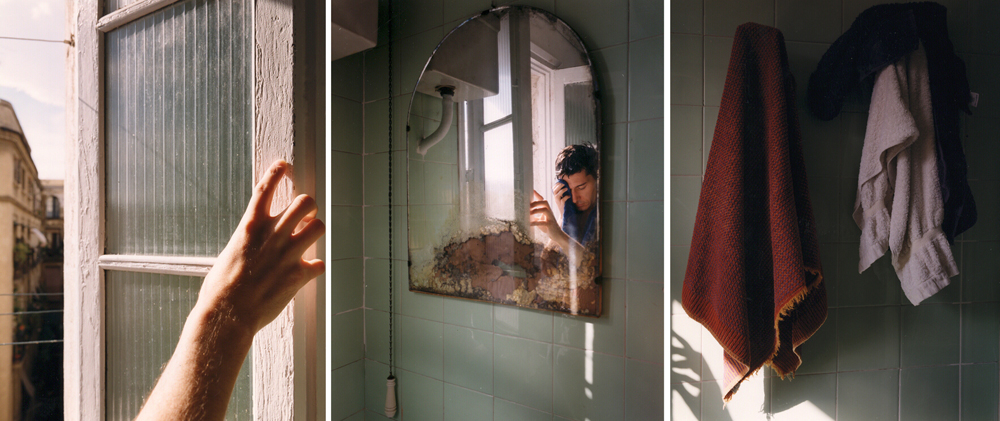David Hilliard
David Hilliard is an American fine arts photographer who studied at the Yale School Of Art in 1994. Hilliard’s work is heavily inspired by the people around him and his personal life, his images document the simple aspects of life and the normality seen everyday inside someone’s home. This successfully links to my interpretation of this identity project as I also plan on photographing my grandparents during their generic day, showing how even the smallest things can make you happy and form who you are. Nevertheless, many of Hilliard’s photographs are staged to seem naturalistic, evoking a performative quality and a middle ground between fact and fiction. His work consists of panoramic style images which he forms out of various single photos, Hilliard explains here http://davidhilliard.com/info_pages/about.html how his images allow him to guide the observer’s focus through each photo, I really love the storytelling created in his work.
From the images above, it is clear Hilliard focuses on capturing very personal photographs that guide the observer through a private moment in his/someone else’s life. He not only photographs scenes dedicated to a specific subject, but also captures areas around their homes in rooms that may hold a special memory, or have a certain link to their lives. In Hilliard’s project ‘The Tale is True’, a series of images unfolding the story of father and son struggling to maintain their relationship, Hilliard wrote ‘it’s my intention that the photographs serve as a testament to perseverance; within even the bleakest of histories there exists threads of enduring hope, reminding us that even in the face of great adversity, we adapt and endure.’ I love the message behind Hilliard’s images and hope to take inspiration when furthering my identity project.
Image Analysis
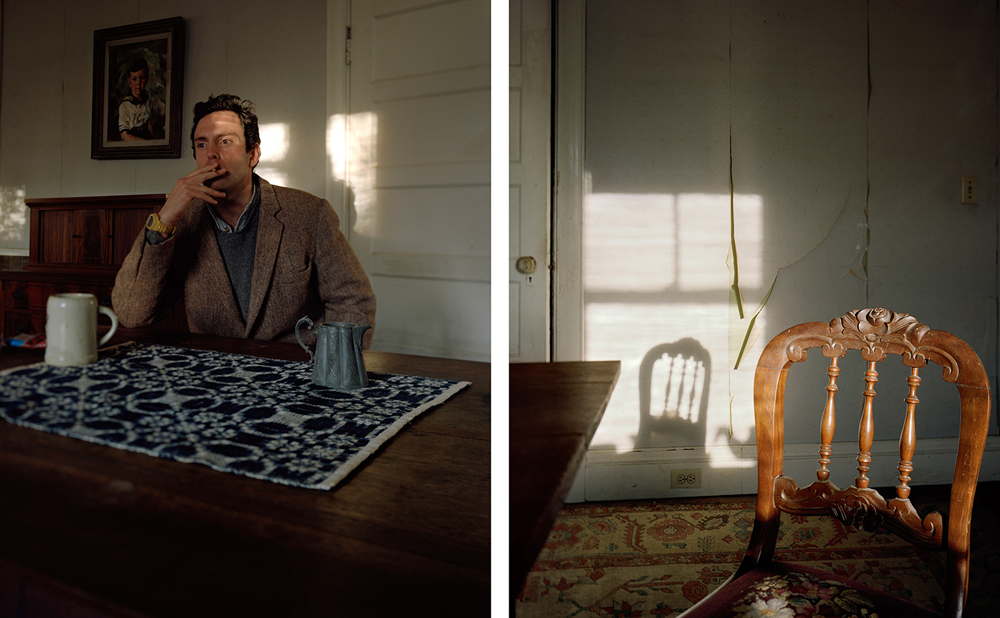
David Hilliard’s project ‘The Tale Is True’ deconstructs issues surrounding familial relationships and the struggle to secure a sense of self and place in a chaotic world. Over 20 years, Hilliard documented images of him and his father, exploring their relationship and the process of aging. Most images in this series were taken at their Cape Cod family home, a place of legacy and tradition, serving as a symbol of identity and history. I love the use of perspective and distance in this image’s composition, alike Hilliard’s iconic work, the use of this panoramic style editing creates a fluidity and link between the images, when put together tells a personal story. In the left image, Hilliard has captured a self portrait sat at his dining room table and in the right he has photographed an empty chair at the end of this table. The distance between himself and this empty chair could symbolise his relationship with his father has deteriorated, possibly showing how he feels more alone as his father ages. Additionally, I really like the use of shadows in this image, especially the one that falls on the wall behind the chair. The shadow clearly shows that the image was taken during daylight, I love how Hilliard uses natural lighting from inside and outside his home to light his images. However, I think this shadow also tells the story of Hilliard’s father’s life- perhaps this was his chair, maybe it still is but as he has aged he may not be comfortable on it anymore? This shadow creates repetition of shape in the image, symbolising echoes of the past, present and future all being the same; it gives the impression that his father’s days may be or seem repetitive as he gets older. Furthermore, Hilliard’s capturing of lines in this image, for example the lines created by the torn plaster on the right wall, connote the idea that him and his father may be trying desperately to get things back to how they used to be. The tearing wall creates jagged lines which may represent his father’s health and the conflict in patterns with the table cloth and carpet may show Hilliard’s overwhelmed mind at a time when his family relationships may be crumbling.

